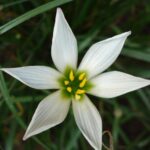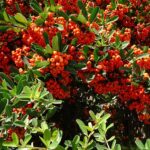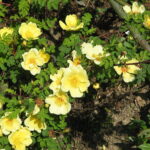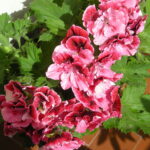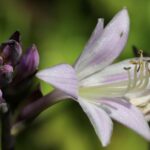The pruning and cutting back of broccoli
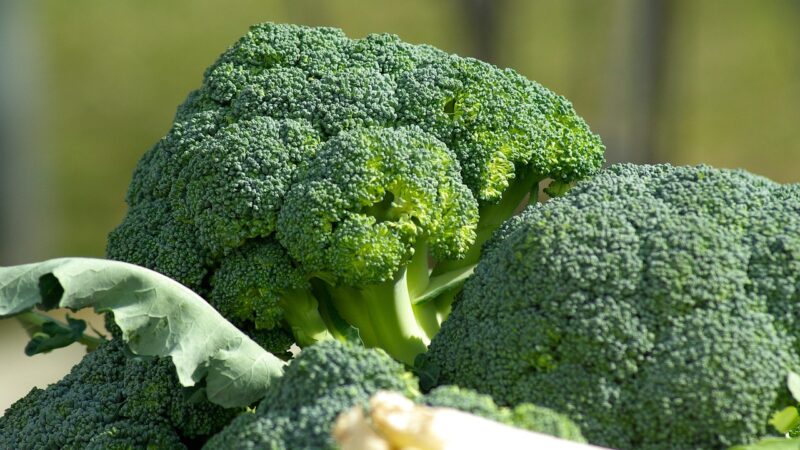
The concept of pruning broccoli is fundamentally different from the pruning of fruit trees or ornamental shrubs; it is not about shaping the plant or removing large sections of growth to encourage a specific structure. Instead, “pruning” in the context of broccoli cultivation primarily refers to the strategic removal of leaves for health maintenance and the specific techniques used during harvesting to encourage a secondary crop. The primary goal is not to control the plant’s size, but to optimize its health, improve air circulation, and maximize the total yield from a single plant over a longer period.
The most common form of “pruning” involves the removal of lower leaves that have started to yellow or show signs of disease. This is a basic but important aspect of garden sanitation. These aging leaves are no longer contributing significantly to the plant’s photosynthesis and can become a breeding ground for fungal pathogens or a hiding place for pests. By removing them, you not only clean up the appearance of the plant but also improve air circulation around its base, which can help to prevent the development of diseases that thrive in damp, stagnant conditions.
The most significant “cutting back” of a broccoli plant occurs at the time of the main harvest. The way in which the central head is cut from the plant has a direct impact on whether the plant will produce subsequent side shoots. A proper harvesting cut is, in effect, a form of pruning that stimulates the plant to redirect its energy from the main stalk into the dormant buds located at the leaf axils along the stem. This encourages the growth of multiple smaller florets, effectively extending the harvest for several additional weeks.
It is important to understand that indiscriminately removing healthy, green leaves from a broccoli plant is counterproductive. The large outer leaves are the plant’s solar panels, responsible for capturing the sunlight that fuels the growth of the head. Removing these vital leaves would be akin to taking away the plant’s engine, which would starve the developing head of the energy it needs to grow to its full potential. Therefore, any leaf removal should be done with a clear purpose: either for sanitation or as a natural part of the harvesting process.
Harvesting the main head correctly
The technique you use to harvest the main, central head of the broccoli plant is the most critical “pruning” cut you will make, and it directly influences the potential for a secondary harvest. This cut should be made when the head is fully developed, firm, and the individual beads or florets are still tightly packed. Do not wait for the head to become loose or for the florets to show any hint of yellow, as this indicates the plant is beginning to flower, and the quality will decline rapidly.
More articles on this topic
To perform the harvest, use a clean, sharp knife or a pair of pruning shears. Make a single, decisive cut through the main stalk approximately five to six inches below the bottom of the head. It is beneficial to make this cut on a slight angle. This angled surface prevents water from pooling on the cut stalk, which could otherwise promote rot and disease that might damage the remaining plant and prevent the formation of side shoots.
By cutting the stalk several inches below the head, you leave a significant portion of the plant, including its large, energy-producing leaves, intact. This is crucial because the plant will rely on these remaining leaves to photosynthesize and produce the energy needed to fuel the growth of new side shoots. If you were to cut the plant down near its base, you would be removing its ability to generate this energy, and no further production would be possible.
After making the cut, the main head should be removed from the garden and cooled promptly to preserve its freshness. The remaining plant, with its stalk and leaves, should be left in the ground. This proper harvesting method signals to the plant that its primary reproductive effort has been completed, which in turn triggers a hormonal response to activate the dormant axillary buds along the stem, initiating the growth of the desirable secondary florets.
Encouraging side shoot production
Once the main head has been harvested using the proper technique, the plant’s energy is redirected, and with continued care, it will begin to produce a secondary crop of smaller side shoots. These shoots develop from the axillary buds located where the side leaves join the main stem. While these side shoots will be much smaller than the original central head, they are often exceptionally tender and sweet, and they can provide a continuous harvest for several weeks, significantly increasing the total yield from each plant.
More articles on this topic
To encourage vigorous side shoot production, it is essential to continue caring for the plant after the main harvest. Do not assume the plant’s work is done. It will still require a consistent supply of water to support the new growth. Ensure the soil remains consistently moist, providing about one inch of water per week if rainfall is insufficient. A lack of water at this stage can stress the plant and inhibit the development of the new shoots.
A supplemental feeding can also provide a beneficial boost to the plant and encourage more robust side shoot formation. Immediately after harvesting the main head, you can apply a light side-dressing of a balanced fertilizer or a liquid feed rich in nitrogen, such as fish emulsion. This provides the plant with a fresh supply of nutrients to draw upon as it channels its resources into growing the new florets. Water the fertilizer in well to ensure it reaches the root zone.
Harvest the side shoots regularly as they reach a usable size, typically when they are a few inches in diameter. As with the main head, cut them when the buds are still tight and green. Regular harvesting of these shoots encourages the plant to produce even more. If you allow the shoots to mature and flower, the plant will signal that its life cycle is complete, and it will stop producing new growth. Continue this process until the plant’s production wanes or the quality of the shoots diminishes.
Removing damaged or diseased foliage
Throughout the life of the broccoli plant, it is good practice to periodically remove any leaves that are damaged, yellowing, or showing signs of disease. This maintenance task is a simple form of pruning that plays an important role in the overall health of the crop. The lower leaves of the plant are the oldest and are naturally the first to begin to senesce, or decline. As they turn yellow, their photosynthetic efficiency drops, and they become a net energy drain on the plant.
Removing these yellowing lower leaves serves several important functions. Firstly, it improves air circulation around the base of the plant and the soil surface. This increased airflow helps the area to dry out more quickly after watering or rain, creating a less favorable environment for the development of fungal diseases like downy mildew and stem rot. This simple preventative measure can significantly reduce the need for fungicides or other disease control interventions.
Secondly, this practice is a key component of garden sanitation. Diseased leaves, whether showing fungal spots or bacterial lesions, are a source of inoculum that can spread pathogens to healthy parts of the plant or to neighboring plants via splashing water or wind. By promptly removing and disposing of this infected material (do not compost it), you actively reduce the disease pressure in your garden and help to contain any potential outbreaks before they become widespread.
When removing leaves, use a sharp, clean pair of pruning shears or a knife to make a clean cut close to the main stem. Avoid simply tearing the leaves off by hand, as this can create a ragged wound on the stem that can become an entry point for diseases. It is important to reiterate that you should only remove leaves that are clearly yellowing, damaged, or diseased. Removing healthy, green leaves is detrimental to the plant’s growth and should be avoided.








